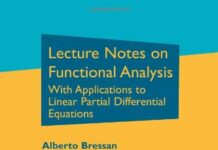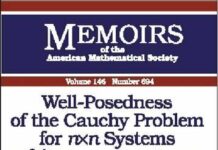
Ebook Info
- Published: 2007
- Number of pages: 328 pages
- Format: PDF
- File Size: 24.47 MB
- Authors: Alberto Bressan
Description
This book provides an introduction to the mathematical theory of nonlinear control systems. It contains many topics that are usually scattered among different texts. The book also presents some topics of current research, which were never before included in a textbook. This volume will serve as an ideal textbook for graduate students. It is self-contained, with several appendices covering a wide mathematical background. Students will be aided by its lucid exposition. More than 100 figures and 100 exercises have been inserted, helping the readers to understand the key geometric ideas and build their intuition. For science or engineering students, this book provides a richly illustrated overview of the basic techniques and results in the theory of linear and nonlinear control. More mathematically oriented students can use this text as a useful introduction, before tackling more advanced, research oriented monographs.
User’s Reviews
Editorial Reviews: About the Author Alberto Bressan received his Ph.D. from the University of Colorado, Boulder, in 1982. He worked for several years as professor at the International School for Advanced Studies in Trieste, Italy. Presently he is Eberly Chair Professor of Mathematics at the Pennsylvania State University, University Park, USA. He is the author of over 150 scientific publications, in the areas of differential inclu- sions, control theory, differential games, partial differential equations, and hyperbolic systems of conservation laws. Within the mathematical theory of control, his main contributions relate to: the classification of time optimal feedbacks (with Benedetto Piccoli), the analysis of im- pulsive control systems, modelling mechanical systems controlled by active constraints (with Franco Rampazzo), and the introduction of patchy feedbacks for stabilization and optimal control (with Fabio Ancona). He gave a plenary lecture at the International Congress of Mathematicians, Beijing 2002. In 2006 he received the A. Feltrinelli prize for Mathematics, Mechanics, and Applications, from the Accademia Nazionale dei Lincei in Rome. Benedetto Piccoli received the Laurea degree (cum laude) from the University of Padova, Italy, and the Ph.D. degree from the International School for Advanced Studies (SISSA/ISAS), Trieste, Italy, in 1991 and 1994, respectively. Currently, he is Research Director at the Istituto per le Applicazioni del Calcolo “Mauro Picone” of the C.N.R. He held visiting positions at Rutgers university and Universite de Paris Sud Orsay. He has published more than 80 research papers in journals, books, and refereed conferences. He is editor in chief of Networks and Heterogeneous Media and he is in the editorial board of SIAM Journal on Control and Optimization, Journal of Dynamical and Control Systems and ESAIM Control Optimization and Calculus of Variation. His main research interests are in the fields of control theory (optimal control, hybrid systems, quantized systems), mathematical finance, conservation laws and traffic flow.
Reviews from Amazon users which were colected at the time this book was published on the website:
⭐The book will not have any mkt. The overall design is poor. It does not explain well as a junior memo and it does not go as deep as a senior memo.
⭐
⭐
⭐
Keywords
Free Download Introduction to the Mathematical Theory of Control (Applied Mathematics) in PDF format
Introduction to the Mathematical Theory of Control (Applied Mathematics) PDF Free Download
Download Introduction to the Mathematical Theory of Control (Applied Mathematics) 2007 PDF Free
Introduction to the Mathematical Theory of Control (Applied Mathematics) 2007 PDF Free Download
Download Introduction to the Mathematical Theory of Control (Applied Mathematics) PDF
Free Download Ebook Introduction to the Mathematical Theory of Control (Applied Mathematics)


